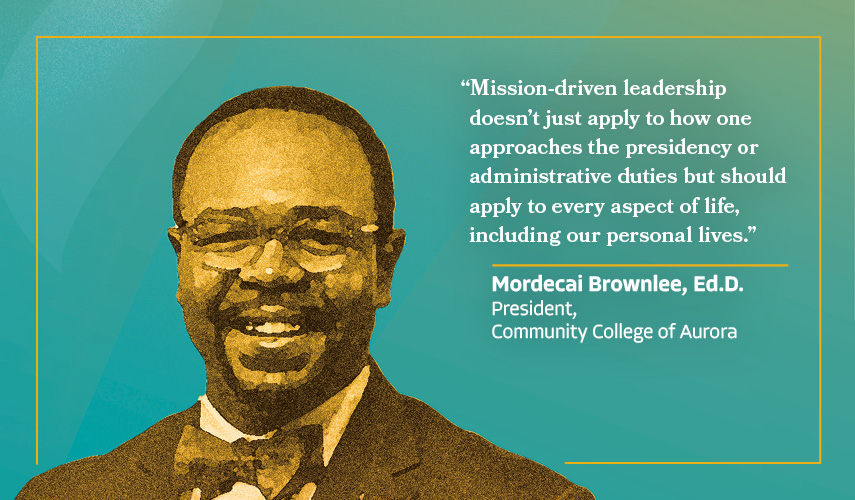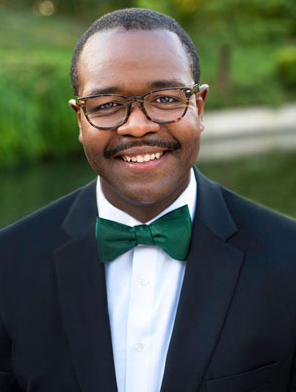
Courageous Leadership
The Mission-Driven President: Navigating Challenges with Purpose and Courage
Serving as a college president has been the most vulnerable role of my career. The position itself holds immense power and influence. If you noticed, I didn’t say I had incredible power and influence; the position does. Courageous leadership shouldn’t be found in what personal power one can showcase at a given moment or measured by a decision one is willing to take. Instead, it lies in one’s effectiveness in fulfilling the responsibilities required by the institution to advance its mission and achieve strategic goals set forth by the strategic plan, which holds everyone accountable with key performance indicators.
As I frequently share with our college community, we must all embrace the responsibility that our roles require and act accordingly. Such action may differ significantly from what our innate nature may desire or how we might address an opportunity. In service to the transformation of others as educators and college executives, it is imperative to recognize that this work is not about us and our personal preferences. It’s about our role and responsibility to the institution.
Mission-driven leadership doesn’t just apply to how one approaches the presidency or administrative duties but should apply to every aspect of life, including our personal lives.

By Mordecai Ian Brownlee, Ed.D.,
President,
Community College of Aurora (CO)
Bravery and Boldness: Leading Institutions to Long-Term Success
In my journey thus far, I have been privileged to serve some powerful and influential leaders. However, not all have been effective leaders throughout their administrations. The common thread shared amongst those who proved effective over the long term was their ability to understand that the institution’s mission stands above all else. To say it another way, no person, entity, or agenda should come before an institution’s defined purpose, as declared by the mission statement. Courageous leadership demands college executives to have a keen awareness of the critical mission bestowed on them and the proper systems to evaluate every opportunity and action associated with the institution to ensure alignment.
This book presents an excellent opportunity to define what it means to be brave and bold to change higher education. First, let’s start with what it is not. Being brave is not about being willing to accept the brunt of criticism for making a decision you believe is correct. Especially if you have failed to utilize a system of proper checks and balances, including data, advisory council(s), and environmental analysis to inform your decision-making thoroughly. Being bold is not about taking action to advance personal agendas, making decisions rooted in one’s own biases, building a personal empire that edifies oneself, utilizing college resources to take advantage of perceived cool ideas that are not centered on advancing the institution’s strategic plan, or failing to center all actions in alignment to key performance indicators established by the institution.
Instead, bravery and boldness are tools that, when utilized strategically, can lead the institution to record success, market responsiveness, or even a rebirth in relevance. Being brave is about accounting for the unknown and developing a plan centered around the community’s and society’s emerging needs. It is a tool that is laser-focused on leading an institution to properly equip itself to thrive in disruptive markets by reimagining the value and purpose the institution provides for learners. Bravery is about embracing the essence of innovation and creating institutional systems for testing concepts before scaling them, encouraging fellow educators to embrace failure as a beautiful gift that teaches without fear of their livelihood or the inability to test new concepts again and again.
At the Community College of Aurora (CCA), my own bravery came into play during the first six months of my presidency when I realized our institution did not have an established system for determining and governing the utilization of resources in alignment with the institutional strategic plan. Furthermore, our institution had failed to properly align all aspects of operations with the Higher Learning Commission’s (HLC) principles of accreditation. Consequently, our institution was not prepared for our 10-year comprehensive regional accreditation. However, I bravely informed our college community of our realities and successfully requested a one-year extension with HLC to delay our institution’s comprehensive review.
Over that year, our institution developed a planning budget, innovation, and assessment cycle to properly align spending and resource allocations with the institutional strategic plan while having proper key performance indicators in place to identify opportunities for further innovation or inform the need for resource allocation to ensure the fulfillment of the strategic plan. Furthermore, we broke down all barriers and systems that led to silos and competing agendas that prevented our alignment with HLC’s principles of accreditation. Following our comprehensive review, I am proud to share that our peer reviewers and, ultimately, HLC identified no findings and approved CCA becoming an Open Pathway institution.
Being bold is about developing an institutional culture committed to embracing its students’ needs and steering clear of distractions and detractors who desire to create disruption rather than build strong institutional foundations in the next era of higher education. It is about embracing artificial intelligence and the brilliance it provides the institution and its learners by creating new means for supporting learning accessibility challenges, native language barriers, and instructional support. Being bold is about grasping that higher education has entered a new era, and college mergers, consolidations, and closures will become routine.
At the Community College of Aurora, we are boldly pursuing equitable student success by deeply integrating artificial intelligence into our learner experience. Recently, CCA has incorporated a live chatbot feature that has effectively increased our ability to answer prospective and current student questions 24 hours a day, seven days a week. Furthermore, this integration has improved our ability to connect with our diverse communities by translating content on our website into various languages. This is critical for our institution as we have over 60 countries represented within our student body.
Another example of AI integration can be found in our Office of Disability and Equity. There, our team has implemented Kurzweil Education and Read&Write to enable our ability to make our curriculum accessible to all students. Our institution firmly believes and understands that to remain relevant in the new era of higher education, AI integrations are critical to the learner experience to ensure community colleges remain committed to access and economic mobility.
Boldness, in combination with bravery, can empower institutions to reimagine a new era of institutional existence and, consequently, help us beat the odds and survive the predicted impacts of environmental factors that might otherwise shutter our doors.
Mission-Driven Leadership
As a mission-driven president, success is rooted in a steadfast commitment to ensuring that every institutional action aligns with and advances the mission. When an opportunity, decision, or action aligns with the mission, the institution has clearance to proceed, as such action enables the fulfillment of strategic objectives and goals established by the strategic plan. However, suppose an opportunity or initiative is not aligned with the institutional mission. In that case, the institution should not pursue it because all misaligned actions that occur within or by the institution are wasteful and ultimately a distraction because they fall outside the mission’s scope.
I was faced with one such decision when our institution reviewed the results of our comprehensive academic review, which revealed that several of our programs were leading our learners to low-wage and low-demand jobs in our market. With an institutional mission statement declaring a college-wide commitment to providing high-quality instruction and support services to prepare students for transfer and employment, CCA found such outcomes unacceptable. Mission-focused, our faculty led the closure of 30 programs of study that were no longer beneficial to our learners based on market demand shifts, low program enrollment, and low completion rates.
My commitment to the institution as we led this historic effort was to ensure no layoffs, dismissals, or furloughs were experienced by completing this work. By eliminating unemployment concerns for our faculty, our educators could innovate to the deepest levels necessary to ensure mission alignment within our academy. Utilizing data and abiding by regional accreditation standards, faculty members whose programs were impacted would be provided with sections to teach in in-demand programmatic areas where students demand additional sections. Furthermore, our institution has developed new programs of study in areas such as construction management, engineering, and the historical development of several Bachelor of Applied Science programs to ensure our institutional relevance based on market demand.
A mission-driven approach to leadership contributes to the institution’s longevity and enables the tools of boldness and bravery to be utilized effectively.
The Power of a Personal Mission
Looking back, my journey has taught me that mission-driven leadership doesn’t just apply to how one approaches the presidency or administrative duties but should apply to every aspect of life, including our personal lives. To that end, I have found it helpful to develop a personal mission statement that serves as an ever-present compass, and I challenge you to do the same. My personal mission statement is, “Mordecai Ian Brownlee empowers the lives of people and develops systems that empower the lives of people.”
Leadership begins with our individual journeys and our families. A mission-driven person can serve a mission-driven home, enabling us to be mission-driven leaders in all our roles and relationships. As for my family, my wife, Daphne, and our children have developed a family mission statement, identified four key values that govern our family decisions, and have a strategic plan that includes objectives, goals, and data points. Twice a year, our family has a vacation where we review our strategic plan, assess the environmental realities impacting our ability to fulfill our plan, and adjust accordingly. Every Sunday, my wife and I hold our family meeting to review our family budget and determine spending and investments over the next week.
I am sharing this information with you not to encourage you to adopt the same structure or habits. Instead, it highlights a very important point I would like to close with—we should not do more for the institutions we serve than we do for our own families. Leadership begins at home. I wish you, your family, and your institution the absolute best.

